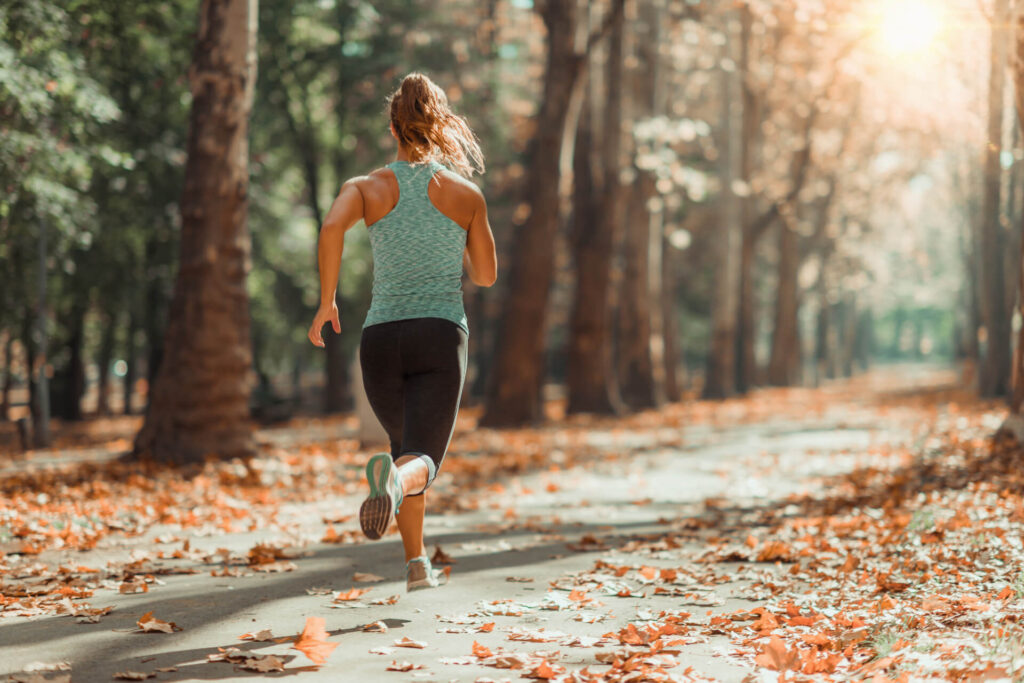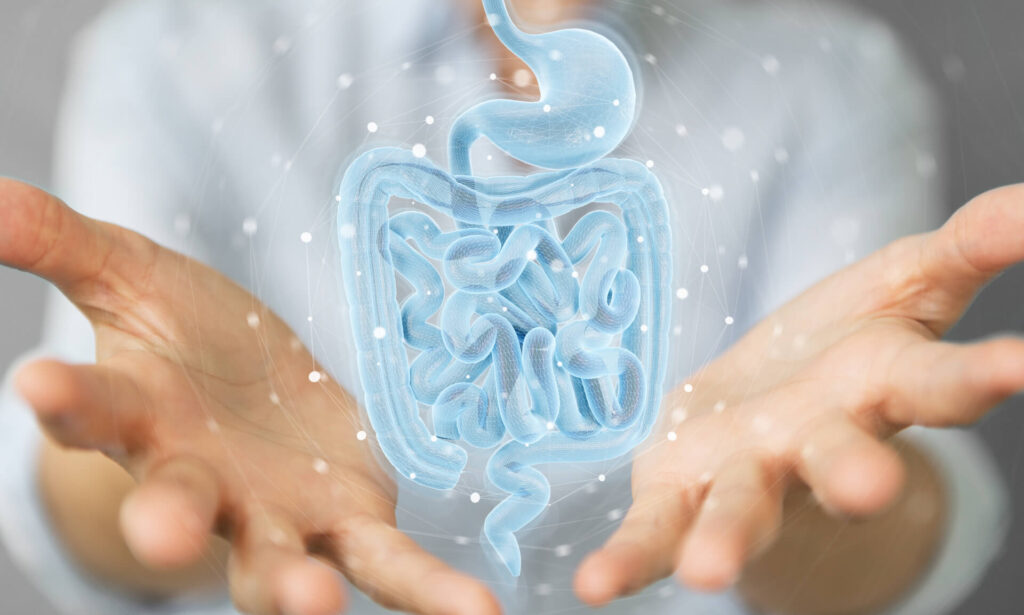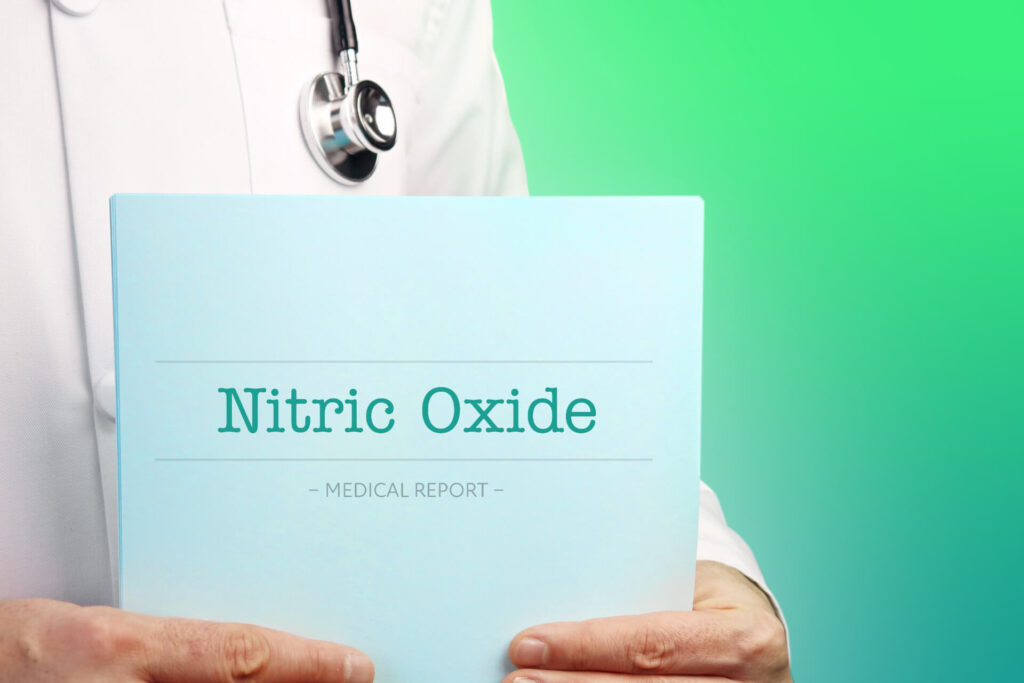Sunlight is therapy. Sunlight synchronizes all our biological clocks, it makes feel-good neurochemicals (serotonin) during the day and produces a sedative (melatonin) at night. Sunlight’s UV energy makes Vitamin D and Nitric Oxide an essential anti-aging molecule. Our mitochondria, our body’s power factories, literally absorb sunlight’s radiant energy to keep us functioning. Sunlight heals, restores and rejuvenates.
When you look at life from an energy perspective, sunlight is as vital a therapy for health as diet and exercise. In part 1, we reviewed how sunlight maintains our health and vitality. Here, we leverage this knowledge so we can use sunlight therapy to meet our unique health needs.
Let's Get Started:
1) Protect your Kids
According to the American Academy of Dermatology, the majority of lifetime sun damage occurs before the age of 18. Children’s skin is thinner, more sensitive and is still actively growing and dividing, making them more susceptible to DNA damage caused by UV radiation. Shield the kids from UV damage by having them wear protective clothing, seeking shade, and slathering them with sunscreen.
2) Understand your Skin
How much sun you need and how much is too much depends almost entirely on your skin’s melanin content. Recall that we have melanocytes, special skin cells that produce the photopigment melanin. Melanin gives our skin, hair and eyes their colour, and its job is to absorb potentially harmful UV rays. The more melanin in your melanocytes, the darker your skin and the more UV light gets blocked.
Having a high melanin content protects your skin from UV’s harmful effects. You are at lower risk for skin cancer and photoaging, but all that UV blocking makes you at higher risk for vitamin D deficiency, especially in winter climates.
Conversely, if your skin has a lower melanin content, it is easier to make sufficient vitamin D and Nitric oxide, but you are at higher risk for skin cancer and photoaging.
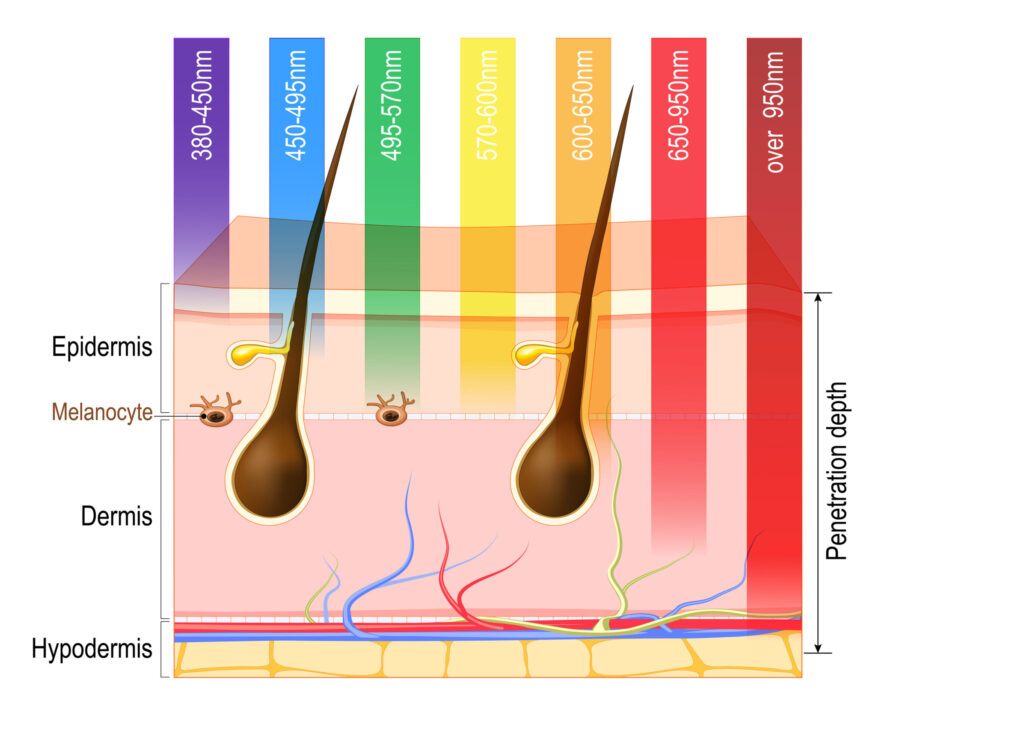
Your skin’s melanin content increases with sun exposure. The more time you spend in the sun, the more melanin you produce, you become tanned.
3) Understand your Sun
UV rays make up only 5% of sunlight, yet they cause most of the damaging effects of the sun. Since the rest of sunlight: visible light, deep red and infrared, have so many health benefits, we want to maximize their benefits while minimizing UV’s harmful effects.
To do this, we utilize the fact that, out of all sunlight’s rays, UV rays are the most blocked by our atmosphere. Why? Because UV rays have the shortest wavelength, making them more easily scattered by oxygen, ozone, and other molecules in the atmosphere.
So the more atmosphere sunlight crosses, the less intense its UV rays. Sunrise and sunset have fewer UV rays because the oblique angle of the sun means sunlight passes through a thicker atmosphere.
So if you are in the middle of winter and at risk of vitamin D deficiency, get your sunlight therapy in the middle of the day or on top of a mountain (less atmosphere), preferably on a cloudless sky.
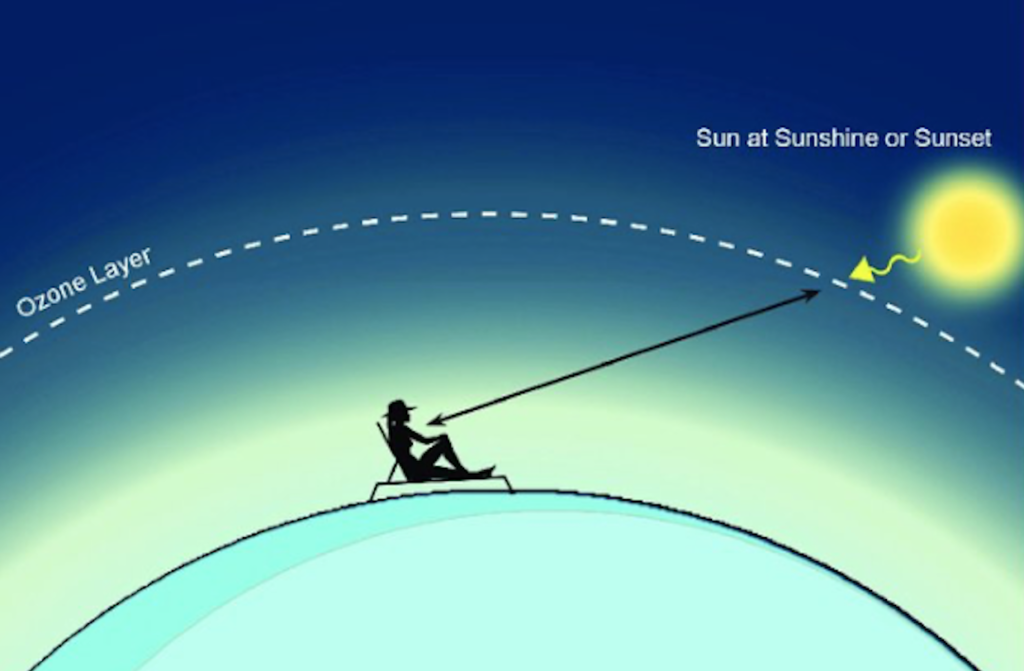
But if you are in the middle of summer or on a tropical vacation, you are at risk of too much UV, so choose your therapy closer to sunrise or sunset and protect yourself from the midday sun. The more melanin you have, the more your ideal therapy is closer to midday. The less melanin you have, the further from midday you should soak in the sun.
Can we be more specific? We could, but then we would be missing the point. Our goal is to soak up all of sunlight’s benefits and just avoid too much UV. And your body tells you when you are getting too much UV, we just have to listen. If your skin feels burnt or turns pink, you are getting too much UV. Learn to listen.
4) Build your Vitamin D levels
Sunlight is the most effective way to get vitamin D, and because it is a fat-soluble vitamin, you can build up your levels during the summer and store them for winter.
Vitamin D production requires only brief exposure. How much sun do we need in summer in the Pacific Northwest to get our vitamin D? Chat GPT says 15-20 minutes on your arms and legs or face, two to three times per week, during midday.
Personally, that is too much sun for me at the beginning of summer, but OK, later in summer when I am more tanned. Use these general numbers sparingly. Listen to your skin! Start when the sun is low, go slow until you become tanned.
Even with extra summer storage, more is needed in winter climates, especially if you have a lot of melanin. Supplement with Vitamin D and fatty fish.
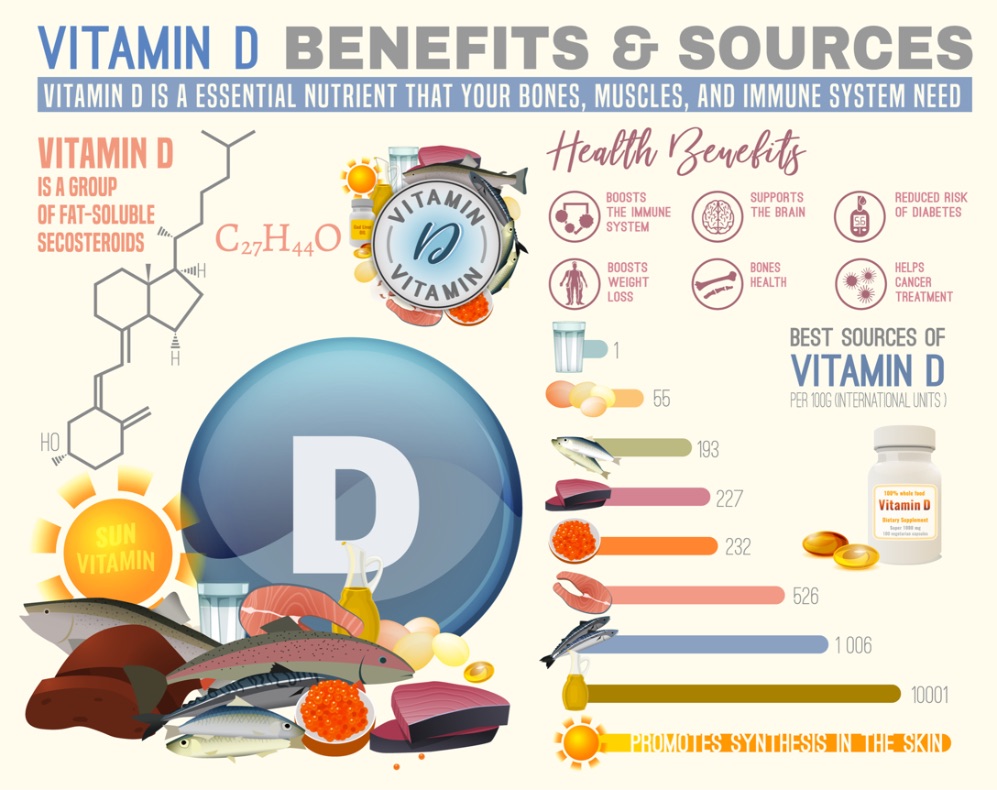
5) Take Control of your Sleep
Do you feel drowsy during the day and can’t sleep at night? Then recalibrate your sleep-wake cycle using sunlight therapy.
When you wake and your eyes take in the blue light in sunlight, it activates your brain to make serotonin. Serotonin is your alert and feel-good neurotransmitter. The earlier you wake, the more serotonin you make. And as long as your eyes keep taking in the energy of blue light, you keep making serotonin.
In the evening, when the light fades, your brain converts that serotonin into a natural sedative, melatonin. It takes several hours to make enough melatonin to get you drowsy. That’s why it’s hard to sleep after staring at your phone and computer screen; they both radiate lots of blue light. Set your iPhone screens to night shift which reduces the blue light. TVs do not radiate much blue light.
Our digestion, hormones, temperature, blood pressure, immune system, and sleep, all thrive on a 24-hour circadian rhythm. When we don’t follow a routine 24-hour cycle, we become desynchronized, taking years off our life.
Commit to a rhythm that fits best with your life. Choose your 8-hour sleep time, and when you wake, get that early morning sunshine into your eyes. Tempered windows block UV rays, and Low-E glass blocks infrared. So if you want to get all of sunlight’s early morning benefits, get outside without your glasses.
In winter, if you wake before sunrise, consider installing full spectrum LED lights in your home and switch them on when you wake. They are not as activating as sunlight but are better than regular LEDs. Speak to a light specialist before installing to understand what you are getting for the extra cost.
6) Minimise your Winter Blues
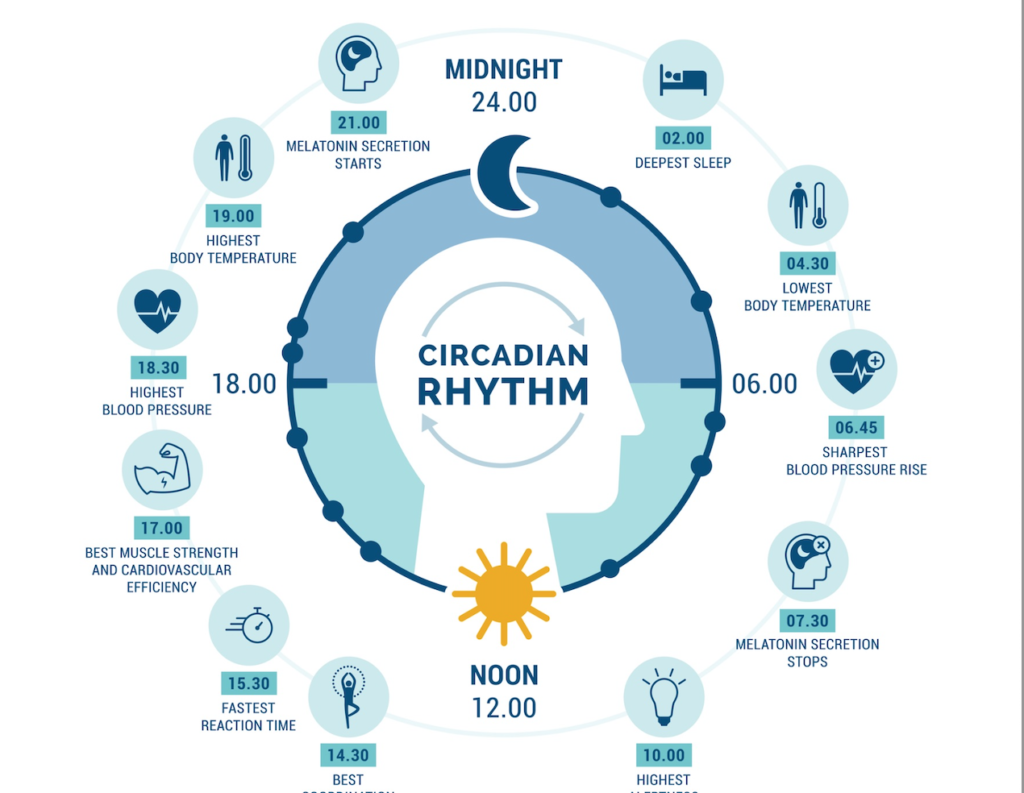
Over 10% of the population in the coastal Pacific Northwest (BC, Washington and Oregon) may suffer from seasonal affective disorder (SAD). Our cloudy rain-filled winter months make this region’s SAD prevalence much higher than the 2% Canadian national average.
Sunlight is pure energy, and we absorb it. It is no wonder that many of us in the Pacific NorthWest feel low/down when the average solar radiation (solar energy) drops to 1.5 to 2.5MJ/m² in winter vs 5 and 8 MJ/m² in summer!
If you get less energy, you have less energy. You feel down.
Besides the obvious therapy -get more sun in winter- here are a few actions you can take:
- Head up a ski mountain. The higher the mountain, the less atmosphere sunlight crosses to reach you making the sun’s energy a little more intense. Snow, like all light surfaces, reflects the sunlight back at you, giving you more, while dark surfaces absorb it, leaving less for you.
- New studies suggest you can make serotonin through your skin, so on a clear day, get outside and expose some skin. Who knows if your winter sun is strong enough to create extra serotonin, but those few minutes of cold shock can boost your mitochondria.
- Use SAD lamps. Choose one that has a similar brightness to the sun, i.e. radiates about 10,000 Lux. Make sure the lamp explicitly says it is UV free. Turn the lamp on at your wake time to synchronize your circadian rhythms and get your serotonin production going. How much you use it daily depends on the lamp suggestions and your personal needs. Explore.
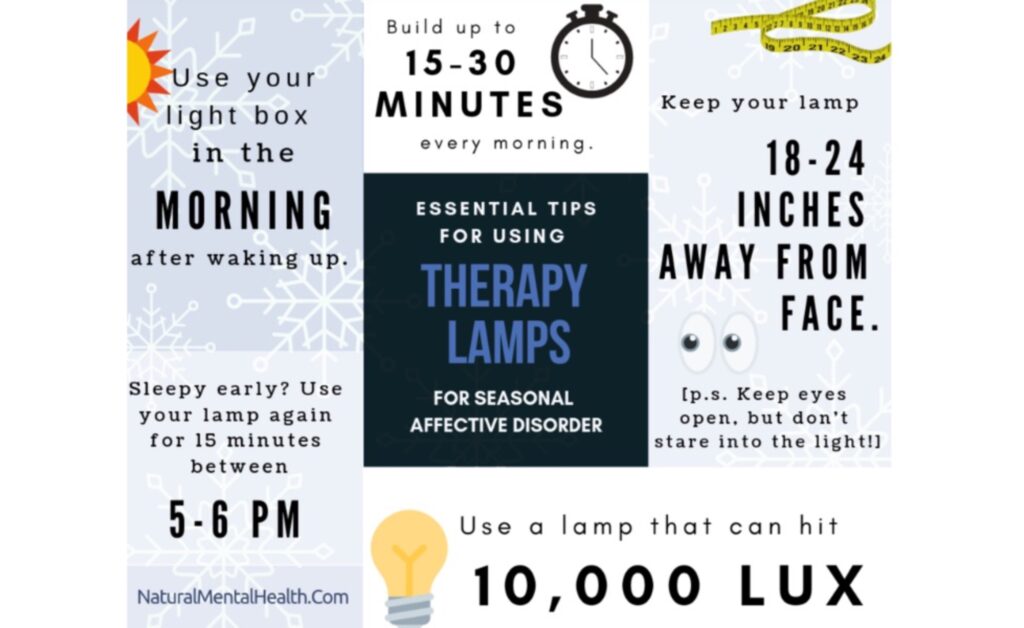
- Regular exercise. Exercise relieves the symptoms of depression, including SAD. Do it outdoors to help synchronize your circadian rhythms and show some skin for triple health points.
- Consider installing full-spectrum LED lights throughout your home. Before you do this, speak to a light specialist to understand what you are getting for the extra cost.
7) Improve your Vision
Several studies show that the more time you spend outdoors in natural light, the less the risk of Myopia.
Another study found that 3 minutes of exposure to deep red light in the morning once per week was enough to improve age-related vision decline for up to one week. Red light improves your vision by activating your retinal mitochondria improving their energy output that typically declines with age. There is proportionally more deep red light in sunlight in the early morning and late evening—another reason to get outside early in the morning without your glasses.
Red light may improve your vision, but excessive UV light causes cataracts, macular degeneration, and photokeratitis (also known as “snow blindness”), a painful condition caused by the sun’s reflection off snow or water. Protect your eyes during the bulk of the day, and never look directly at the sun.
8) Sunblock/Sunscreen: What you Need to Know
Sunblocks and sunscreens (along with protective clothing), are a must for Sunlight that is too intense for your skin.
Here are four tips to help you find the right product:
1) Both UVA and UVB can cause skin damage. Choose a product that blocks both.
2) There are two classes of sun protection, sunblocks and sunscreens. Sunblocks (mineral screens), contain either zinc oxide or titanium dioxide. Applied generously enough, these minerals form a physical barrier over your skin, preventing UV rays from entering. Because they are not absorbed, they leave a white coating on your skin.
Sunblocks are hypoallergenic and non-comedogenic and are less likely to cause a stinging irritation, making them better for sensitive and heat-activated skin. They are safe for babies and during pregnancy.
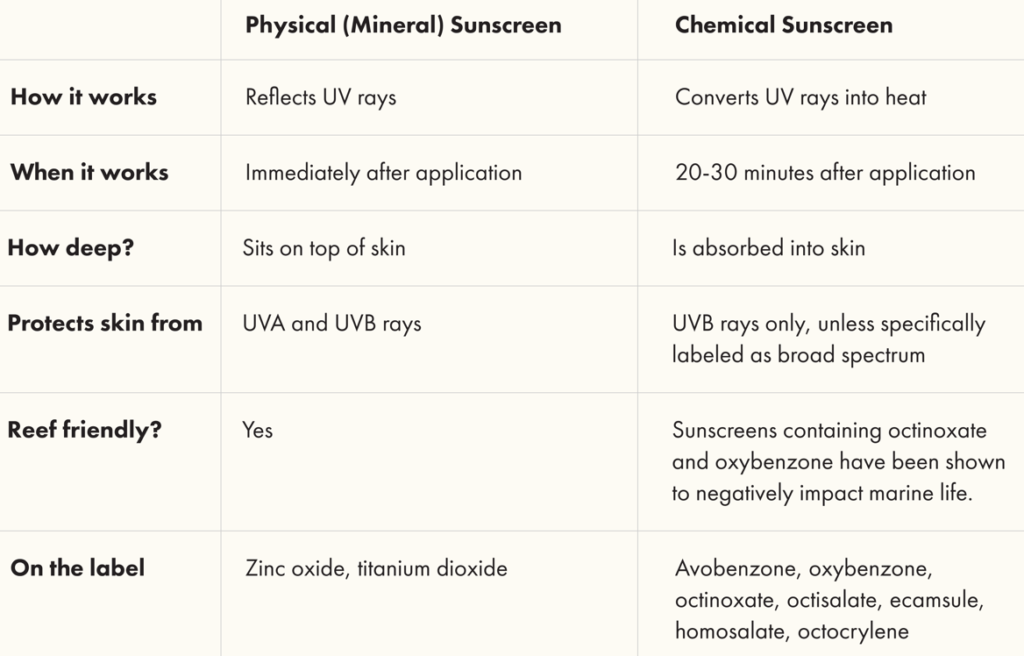
3) Sunscreens (chemical sunscreens) do not physically block UV, they get absorbed by your skin. When exposed to UV light, these chemicals convert UV rays into heat released from your skin. Because sunscreens don’t physically sit on your skin, they aren’t as thick, nor do they leave that white film on you. Sunscreens take 20-30 mins before they work. Some sunscreen chemicals damage coral reefs and are banned in Hawaii.
4) SPF means sun protection factor. SPF 30 blocks about 97% UVB, and SPF 50 blocks 98% UVB. Yes, there is very little difference. The biggest variable in protection is how much you apply and how often you reapply. Be liberal with both and follow the instruction on your product.
Putting it All Together
Sunlight is earth’s largest source of free energy, and we absorb it.
Think about this for a moment. You literally absorb sunlight’s energy and use it to make serotonin, melatonin, nitric oxide, and Vitamin D. Sunlight’s energy boosts your immune system, reduces inflammation, and improves circulation.
It is no wonder that when the sun is less intense as it is winter, our risk of cancer, inflammatory and infectious diseases all increase. Noticed you get more colds in winter and feel more energized and less inflamed in the summer?
When you look at life from an energy perspective, sunlight is as vital to our health as diet and exercise. If you feel the lack of sun in winter, get out of the clouds and into blue sky, white snow and midday winter sun. Or, for more intense sunlight therapy, travel south. You don’t need 5-star luxury for sunlight therapy, you just need sun.
If you travel south, absorb that sunshine when the sun is low and go slow until you make more melanin. Always listen to your skin.
Get your body’s biorhythms synced back to the sun. Wake to sunrise in your eyes to create more serotonin and minimize blue light after dark to make more melatonin. Always make the most of summer sun.
Life is a journey, and sunlight travels with you all along your way, connect wisely.

